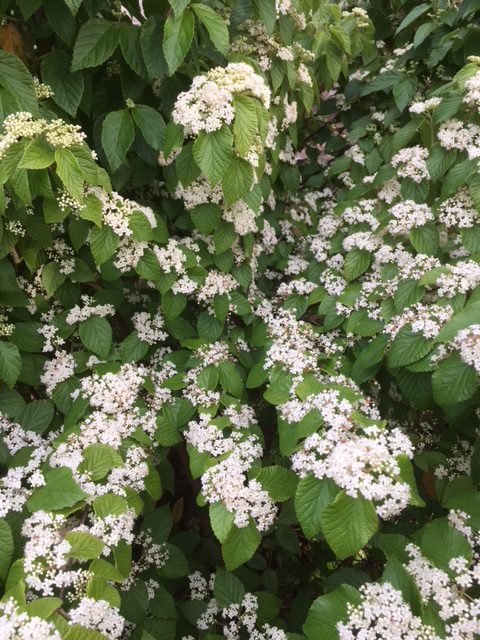
by Julie McConnell | Apr 16, 2018
I’m hard pressed to tell you my favorite song, movie, or place to eat, but when we start talking plants I can come up with whole categories of favorites. I won’t commit to just one species, but when it comes to woody shrubs I am a huge fan of viburnums. We have small ones, tall ones, evergreen, deciduous, smooth leaves, textured leaves, berry producers and sterile types. There are so many different types there must be one for every gardener.
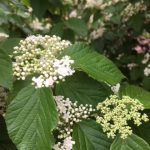
Buds and flowers of Viburnum luzonicum. Photo: J_McConnell, UF/IFAS
I thought I knew a lot of viburnums after spending ten years in the nursery industry, but had not seen Luzon Viburnum, Viburnum luzonicum, until Dr. Gary Knox gave one to me in the fall of 2014. The plant was little more than a couple of stems and light green leaves, but he assured me it would get large and would perform well in the Florida panhandle.
That scrap of a plant went into a large, non-irrigated, full-sun bed in my yard and was hand-watered through the first summer, but after that has been left to fend for itself. My Luzon viburnum is currently over 6 feet tall by 4 feet wide and covered in flowers. It gets no TLC in my landscape, but has yet to be plagued by any pests. The foliage emerges with a slightly pink tone then settles into a light green usually starting in February or March. By late March clusters of small white flowers cover the shrub. It is reported to have the potential to produce berries that transition from red to black, but I have not yet observed that in my garden.
This is not a plant you are likely to stumble across in most garden centers, but is worth keeping a lookout for in case you see it. It is on display with many other wonderful plants in the Gardens of the Big Bend at the UF/IFAS North Florida Research and Education Center (NFREC) in Quincy and in the past has been available at Gardening Friends of the Big Bend plant sales.
For more information about this plant see Missouri Botanical Garden webpage.
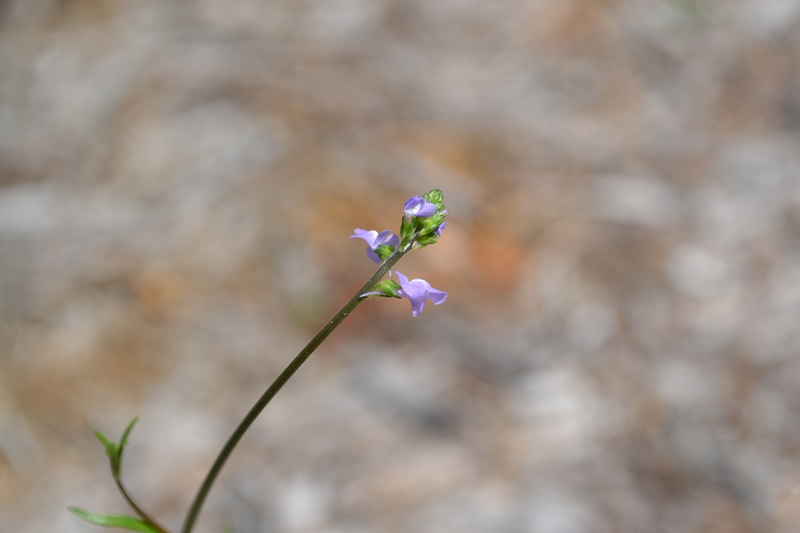
by Beth Bolles | Apr 9, 2018
The change in North Florida temperatures from cooler to warmer is making many winter weeds more noticeable as they begin to flower and form seed. Not all of these plants should be considered for mowing or hand pulling. There are several wildflowers that grow in landscape beds and thinning areas of lawns and can be enjoyed before consistent heat returns.

Toadflax flowers are held above the foliage and are light purple. Photo by Beth Bolles, UF IFAS Extension Escambia County
One very delicate wildflower that is growing now is the Toadflax, Linaria canadensis. The leaves are very small and grow low on the ground. Thin flower stalks grow several inches and are topped with light purple flowers. Although toadflax pops up in beds and lawns don’t be so quick to pull it out. This wildflower is a host to the Buckeye butterfly, one of our earlier visitors to gardens. If you look closely you may even see the tiny black, spiny caterpillar eating toadflax leaves. Visit the UF publication on the Buckeye butterfly to learn more.
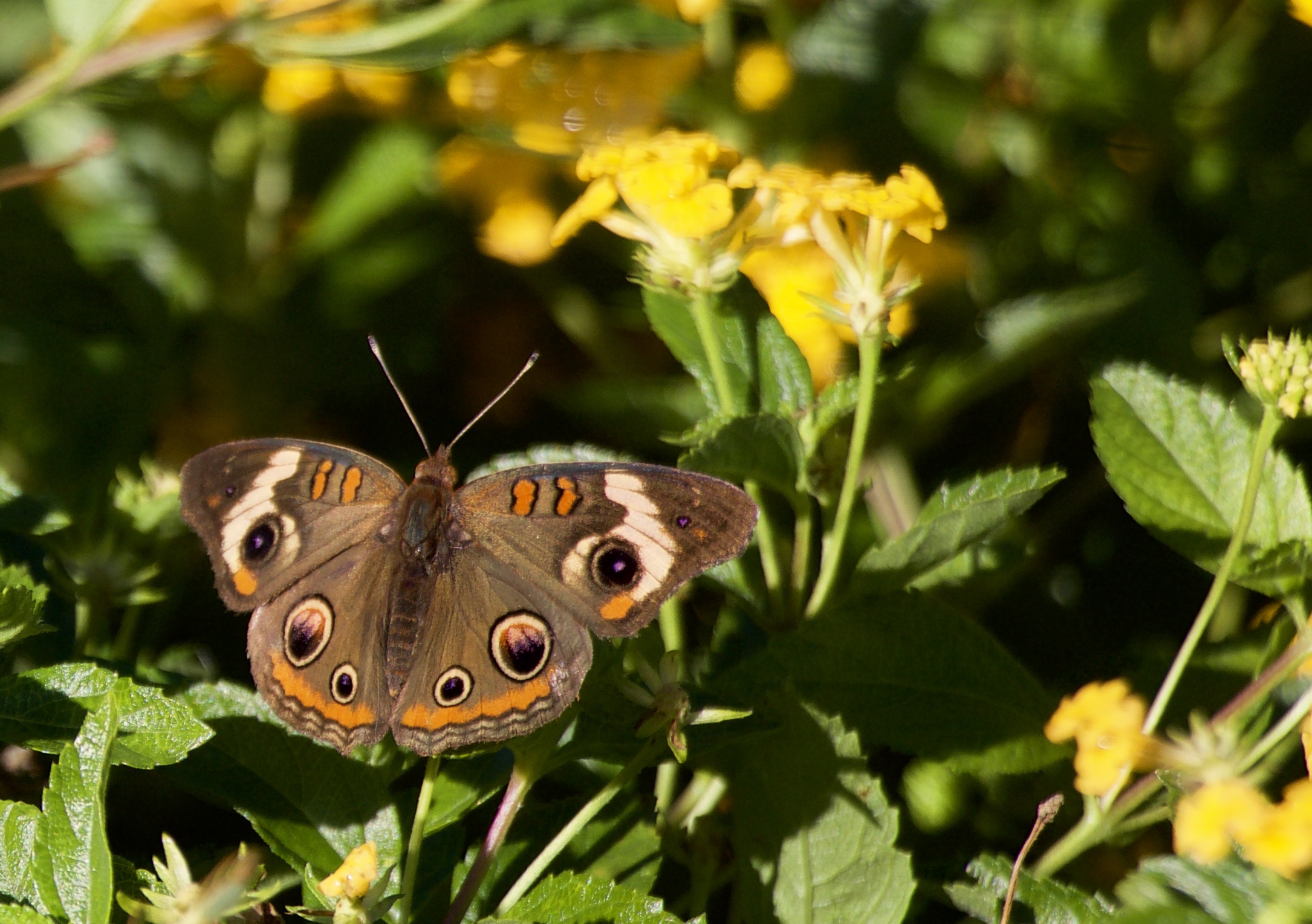
Adult buckeye butterflies are common in landscapes in early spring and late summer. Photo by Lo Sitton, UF IFAS Extension Escambia County

by Sheila Dunning | Apr 9, 2018
 This month, recognized by the Senate and Florida’s governor, reminds diggers why calling 811 before all outdoor digging projects is important to your safety. Before installing a mailbox, fence, deck, garden or tree make sure to call Sunshine 811 to have underground lines marked. 811 is the free national number designated by the Federal Communications Commission. It notifies utility companies, who in turn send their professional locators to identify and mark the appropriate location of underground line with paint and flags in colors that identify the utility type. The following colors represent the seven various utilities: red, orange, blue, green, yellow, purple and white. To see which colors correspond with each utility go to: http://www.call811.com/faqs/default.aspx.
This month, recognized by the Senate and Florida’s governor, reminds diggers why calling 811 before all outdoor digging projects is important to your safety. Before installing a mailbox, fence, deck, garden or tree make sure to call Sunshine 811 to have underground lines marked. 811 is the free national number designated by the Federal Communications Commission. It notifies utility companies, who in turn send their professional locators to identify and mark the appropriate location of underground line with paint and flags in colors that identify the utility type. The following colors represent the seven various utilities: red, orange, blue, green, yellow, purple and white. To see which colors correspond with each utility go to: http://www.call811.com/faqs/default.aspx.
Hitting an underground utility line while digging can cause injuries, utility service outages to an entire neighborhood and damage to the environment. Failure to call before digging results in one unintentional utility hit every eight minutes nationwide. You could also be financially affected with costly fines and high repair costs.
Calling 811 in Florida is the law. At least two full business days before digging, do-it yourselfers and professional excavators must contact 811 by phone to start the process of getting underground utility lines marked. This is a free service. Be sure that all utilities have been marked before grabbing the shovel. Follow up on your one call ticket by contacting 811 again on the third day. For more information on Florida’s law, visit www.Sunshine811.com.
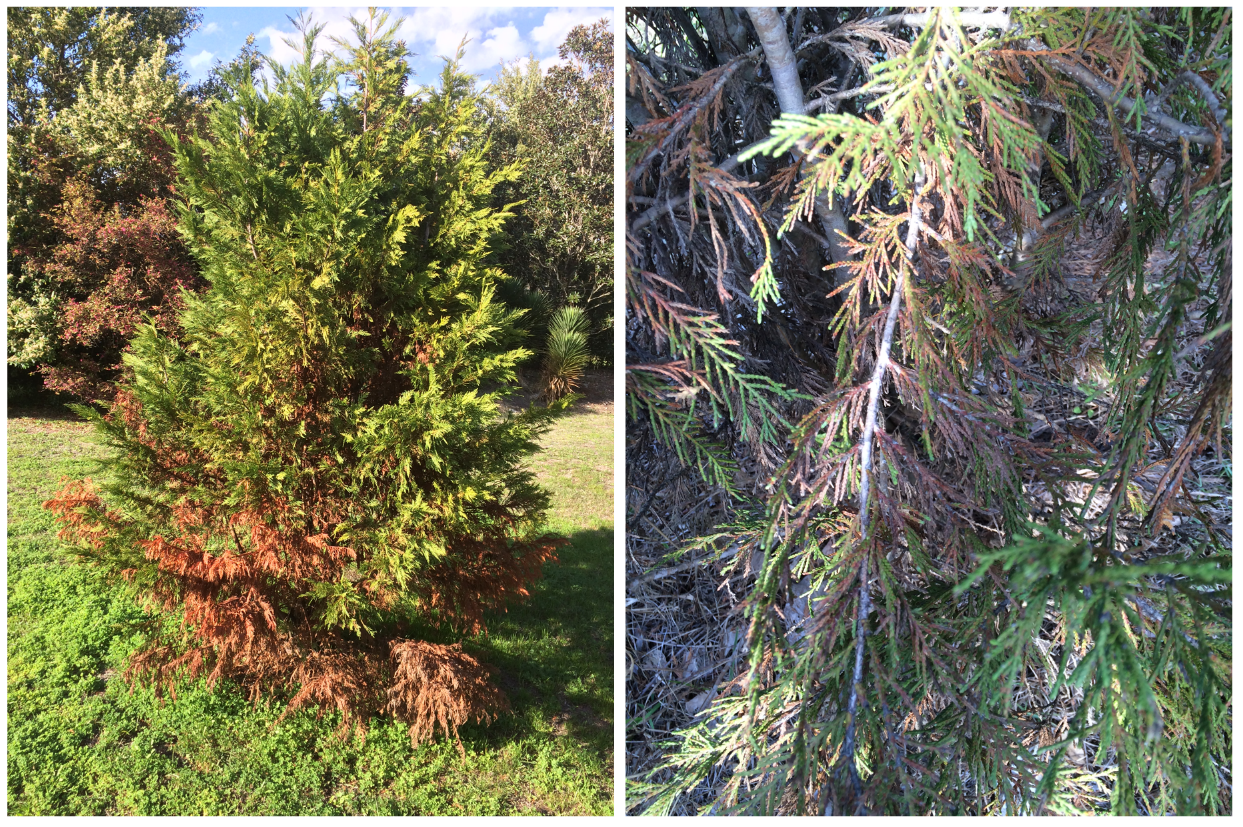
by Ray Bodrey | Apr 9, 2018
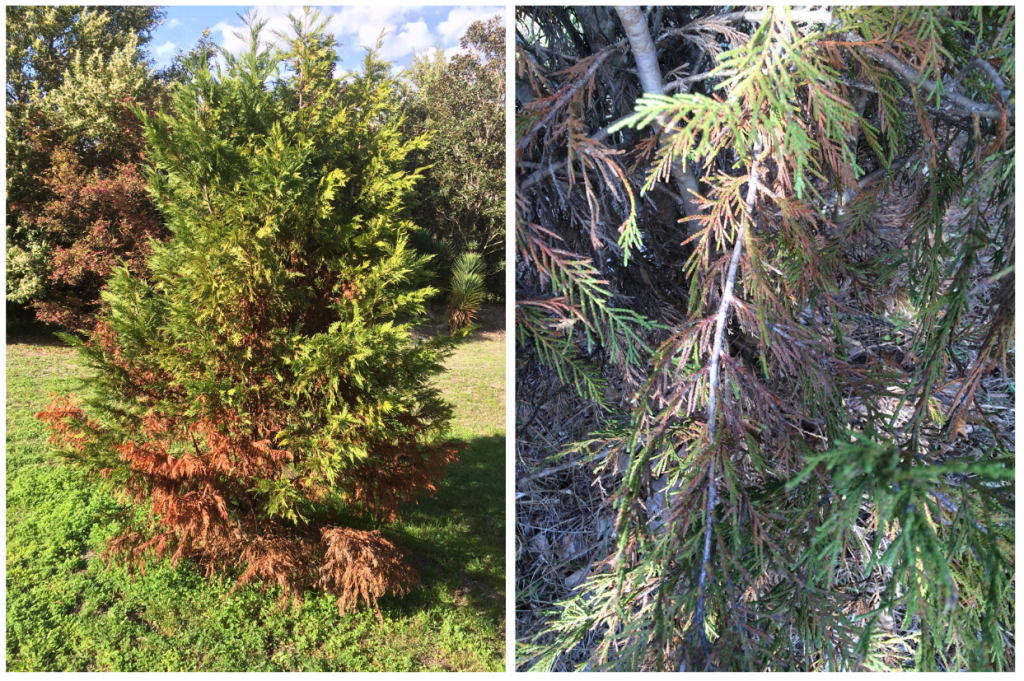
Figure: Passalora Needle Blight in Leyland Cypress. Image Credit Ray Bodrey
Leyland cypress (Cupressocyparis leylandii) has been a very popular landscape tree in the U.S. for many decades. It has endearing characteristics, most notably its fast-growing nature and ability to make an appealing boundary around property. However, various diseases have created an overwhelming survival hurdle.
Seiridium or Botryosphaeria cankers (also referred to as dieback) are fungal diseases that can strike Leyland cypress. In general terms, cankers are multiple dark oval lesions that are usually sunken into the bark. The lesions are accompanied by the flow of resin. Discolored branches will be seen first as an indicator. If the fungus finds its way into the body of the trunk, most likely the tree will not survive. With Seiridium canker, girdling of branches and stems is not an issue, however needles will fall off the branches easily. With Botryoshaeria canker, stem girdling will occur, killing the branch, but needles generally will stay on the branch.
Passalora Needle Blight or commonly known as twig blight, caused by the fungus Passalora sequoia, is a major concern in the Southeast. The disease is usually more active in the spring and summer months and affects mostly younger growth. Symptoms of the disease are the browning of needles, followed by needle drop. Disease usually begins on the lower part of the tree and moves up. Sometimes the disease is widespread on one side of the tree only, where sunlight is not able to dry moisture quickly. Ventilation is key when planting these trees as a border hedge. However, the Panhandle environment and climate is very conducive for these pathogens to affect the vulnerable Leyland cypress.
If you have or will plant Leyland cypress, there are some fungicide options to consider as preventive maintenance. It’s important to stress that trees that are already infested, will succumb to the disease regardless of treatment. Fungicides such as Daconil & Mancozeb (Pentathlon) can be used in the spring & fall. Propiconazole is the best fungicide for the warmer, summer months (June through August). Fungicides such as Myclobutanil or Thiophanate-methyl are also commonly used. Always read application directions and pay close attention to the application rate interval.
There are other evergreen options, that have a much higher likelihood of not contracting a fungal disease that can cause terminal results. Native species like the red cedar (Juniperus virginiana) or white cedar (Thuja occidentalis) are great choices. Again, these species are not totally immune to twig blight or other fungal pathogens, but they are hardier and less likely to contract diseases. For more information, please contact your local county extension office.
Supporting information for this article can be found in the following the UF/IFAS EDIS publication, “Cupressocyparis leylandii: Leyland Cypress” by Edward F. Gilman and Dennis G. Watson: http://edis.ifas.ufl.edu/pdffiles/ST/ST67100.pdf & the Clemson Cooperative Extension Publication, “Leyland Cypress Diseases & Insect Pests”: http://www.clemson.edu/extension/hgic/pests/plant_pests/trees/hgic2004.html
UF/IFAS Extension is an Equal Opportunity Institution.








